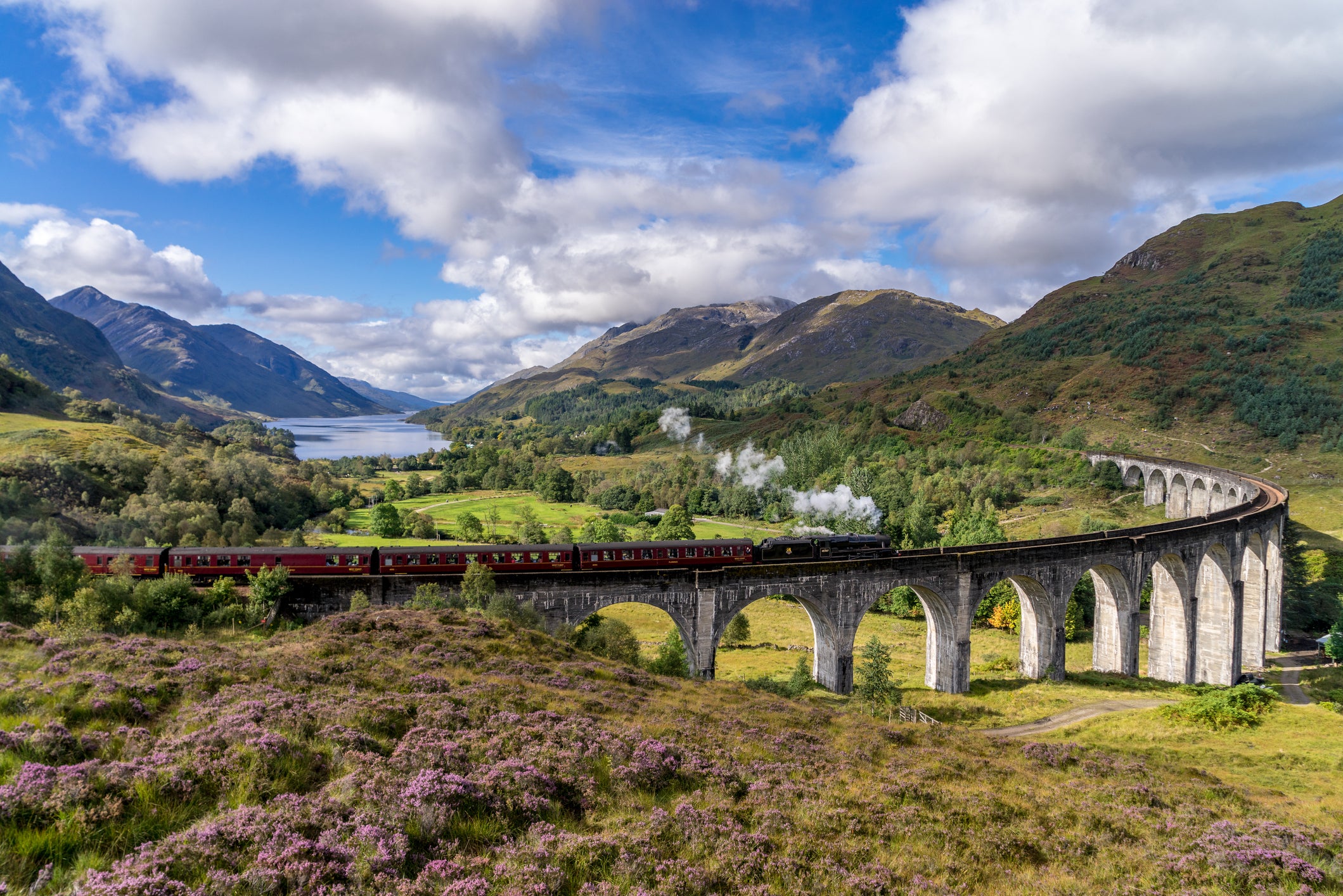The most scenic train networks in the UK, as chosen by Simon Calder
Train Talk: I have calculated the operators that take in the most glorious British landscapes by rail

Your support helps us to tell the story
From reproductive rights to climate change to Big Tech, The Independent is on the ground when the story is developing. Whether it's investigating the financials of Elon Musk's pro-Trump PAC or producing our latest documentary, 'The A Word', which shines a light on the American women fighting for reproductive rights, we know how important it is to parse out the facts from the messaging.
At such a critical moment in US history, we need reporters on the ground. Your donation allows us to keep sending journalists to speak to both sides of the story.
The Independent is trusted by Americans across the entire political spectrum. And unlike many other quality news outlets, we choose not to lock Americans out of our reporting and analysis with paywalls. We believe quality journalism should be available to everyone, paid for by those who can afford it.
Your support makes all the difference.Those of us who depend on trains to travel around Britain are not having the best of decades.
The government’s decision to tear up plans for the most critical parts of HS2 will be seen for many years to come as an act of criminal damage to the nation’s infrastructure – and the latest blow to confidence in a Victorian network required to try to deliver a 21st-century experience.
For significant parts of 2020 and 2021, rail was off-limits except for essential workers. Frontline staff kept the network running. Billions of pounds were spent running largely empty trains.
Once the pandemic was over, those workers wanted a no-strings pay settlement that took account of their contribution during Covid. Ministers insisted that the finances of the rail industry had emerged in such poor shape (one estimate is that revenue is down £40 per second) that even a modest pay rise was contingent on radical reforms to working arrangements.
The deepest, longest and most bitter industrial dispute in living history has thwarted tens of millions of journeys since strikes began 16 months ago. Both the main rail union, the RMT, and the train drivers’ union, Aslef, remain far apart from the train operators – whose hands are tied by the government.
Yet, as winter infiltrates our lives once more, there are a couple of reasons to be cheerful.
The first is that we will go at least four weeks without a national rail strike – which I hope indicates that negotiations, or at least talks about talks, are underway.
The most recent stoppage was the train drivers’ walkout on Wednesday 4 October, timed to coincide with the end of the Conservative Party conference in Manchester. With, as I write, no further action notified by Aslef or the RMT, the first possible date for another strike is Thursday 2 November.
Get those trips in now, fellow travellers – and make the most of the dwindling daylight to enjoy the best of the UK’s rail journeys.
To help, I have calculated the train operators with the most scenic networks.
The three highest-placed English operators share third place: CrossCountry, Northern and TransPennine Express.
CrossCountry wins because it has the very best of the southwest and the northeast. It shares with GWR the amazing stretch of the South Devon coastline from Teignmouth to Dawlish (and, I contend, the Exe estuary into Exeter). But it can also claim the marvels of the East Coast Main Line, shared with LNER, from Durham as far as Aberdeen. Coast, cities and spectacular civil engineering, over the Tyne, the Firth of Forth and the Tay en route to the granite city.
The Northern network links many of the loveliest parts of highland England, as well as some fine coastal stretches – Lancaster to Barrow, curving around Morecambe Bay, is highly recommended. The train operator would rate highly for the Settle-Carlisle line alone. TransPennine Express carves through Cumbria, too, as well as the Scottish stretch of the West Coast Main Line. It also runs on the main line from Manchester to Leeds across the Pennines, and much of the East Coast main line north from Durham.
Second place is occupied by Transport for Wales. Wherever you travel in the nation, as well as the stretches through the English borders, you will be blessed with some combination of coast, countryside and industrial archaeology.
Only ScotRail can do better, thanks to its repertoire of rail glory threading through landscapes matched in majesty by the infrastructure created by Victorian engineers. Stranraer to Glasgow to Fort William to Mallaig is world-class, as are the lines running north, east, south and west from Inverness.
The two top train operators also enjoy the benefits of having settled their disputes with the rail unions. Make the most of the marvels.
Join our commenting forum
Join thought-provoking conversations, follow other Independent readers and see their replies
Comments